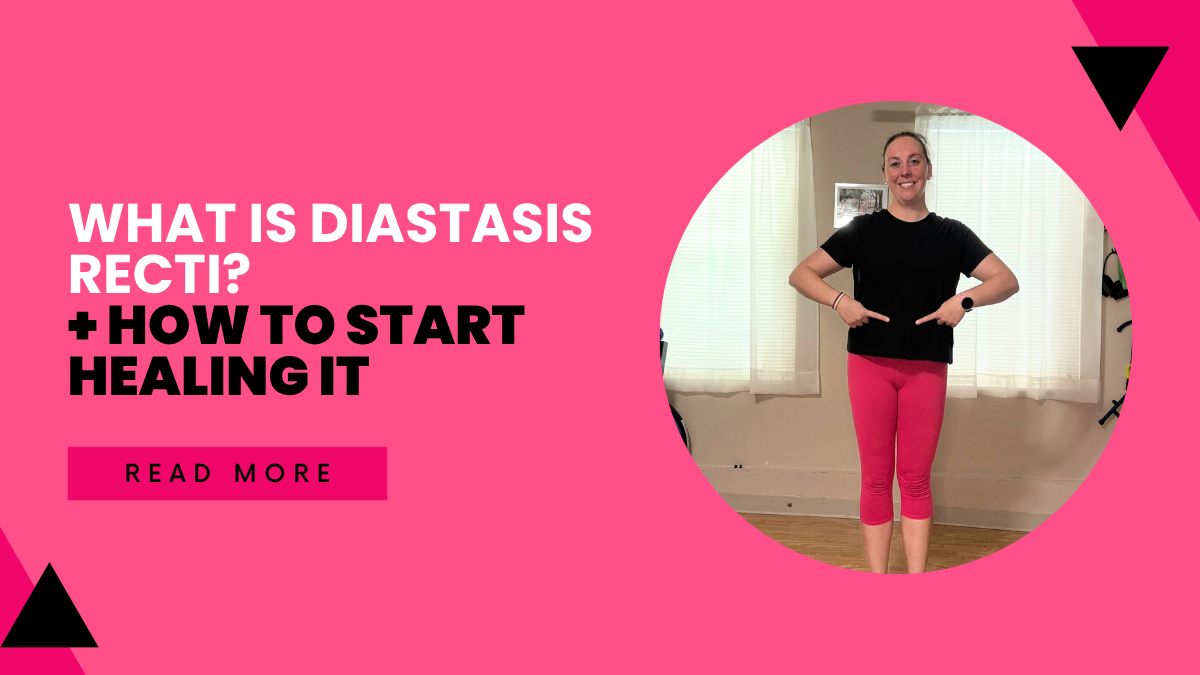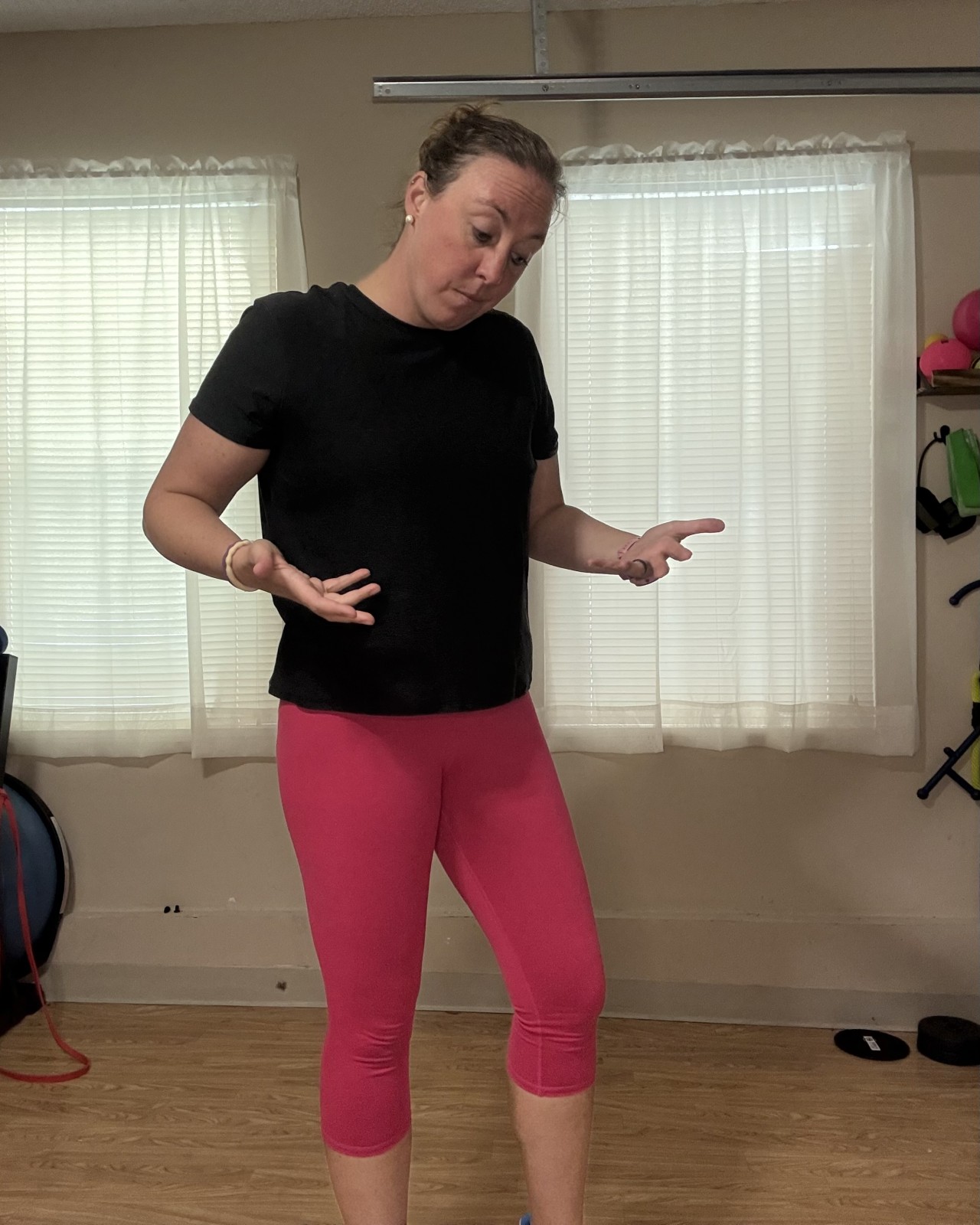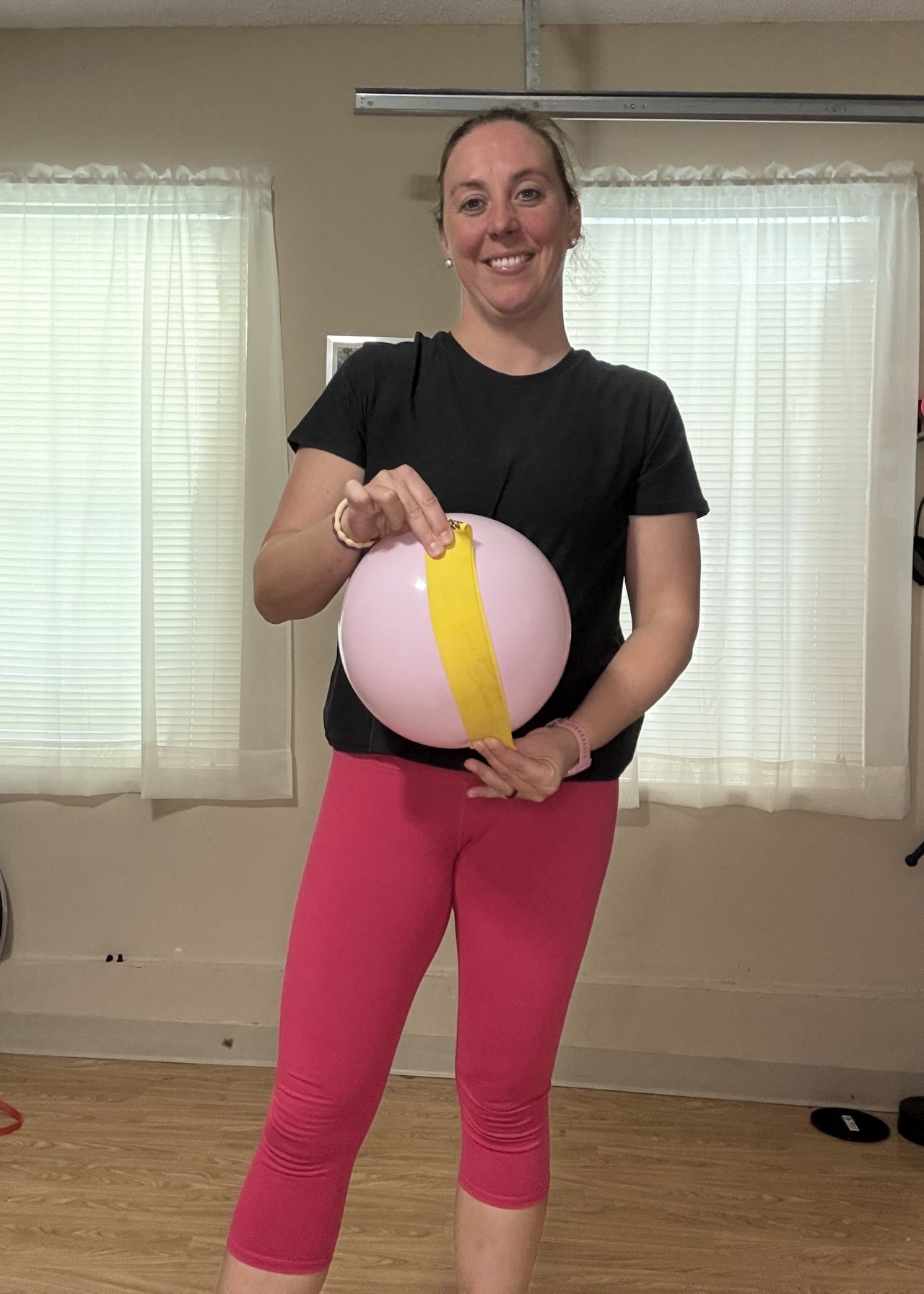What Is Diastasis Recti? (+ How to Start Healing It)

Learn what Diastasis Recti really is, how it happens, and simple steps to start rebuilding core strength during pregnancy and postpartum.
What Is Diastasis Recti? A Simple Breakdown for Pregnancy & Postpartum
If you’ve ever Googled “ab separation” or “the gap after pregnancy,” you’re already talking about Diastasis Recti. And just so you know — this isn’t rare, dramatic, or something you “did wrong.” It’s a completely normal change that happens as your body grows a baby.
In fact, every pregnant body will have a Diastasis late in the third trimester. Your abdominal muscles make room for your baby. That’s how your body is built.
Where things get confusing is what happens next.

DR Isn’t Just About the Gap
A lot of women are told to focus on “closing the gap,” but that’s outdated and honestly not very helpful. What really matters is:
- Tension (can your core generate support?)
- Depth (how much pressure pushes into the gap?)
- Function (can your core support real-life movements?)
A core that’s “closed” but floppy isn’t healed.
A core that still has a small gap but strong tension? Totally functional.
DR Shows Up in Everyday Life
You might notice:
- Doming or bulging down the center of your abs
- Lower back soreness
- Weakness when lifting kids, strollers, or car seats
- Trouble creating core tension
- Feeling like your middle is disconnected
If this sounds familiar, you’re not alone — and you don’t have to feel stuck.

Good News: You Can Improve DR at Any Stage
Whether you’re early pregnancy, years postpartum, or somewhere in between, your core can get stronger. Your body can rebuild support. You can learn to control pressure instead of pushing into the separation.
You don’t need long workouts, fancy equipment, or a six-pack.
You do need:
- The right breathing patterns
- Smart pressure management
- Core exercises that match your level
- Movements that support you in lifting, twisting, reaching, and carrying through real mom-life
Healing DR is less about “spot-fixing” your abs and more about teaching your whole body to work together again.
If You Want Step-by-Step Guidance
My full program walks you through everything with short videos, simple explanations, and workouts that fit real life. You’ll learn how to assess your DR, rebuild your deep core, and support your body during pregnancy, postpartum, and beyond.
👉 Explore the full DR + Core Recovery program here
Want to learn how C-sections fit into the DR conversation too?
I wrote a full post on how a C-section can affect your core, pelvic floor, and recovery — plus what actually helps.
👉 Read the C-Section & DR guide here.
Categories: : Diastasis, healing after birth, Pelvic Floor & Core Health, Postpartum, Pregnancy
 Jen Landry
Jen Landry 